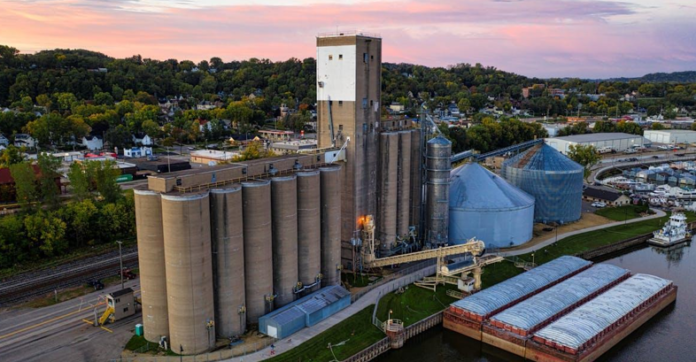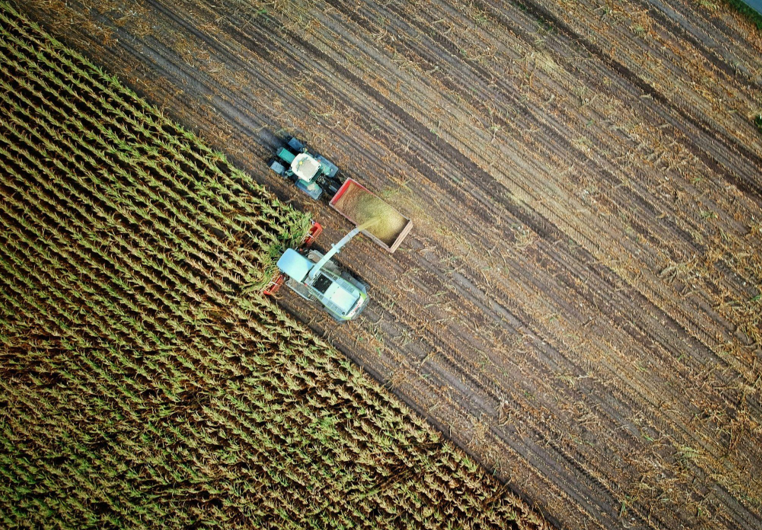
As global demand for food continues to rise, the connection between agriculture and shipping has never been more critical. We’re witnessing a fascinating transformation in modern logistics, where efficient transportation plays a key role in ensuring fresh produce reaches consumers swiftly and safely. This intersection not only impacts our food supply but also influences economic trends and sustainability practices worldwide.
In exploring this dynamic relationship, we’ll uncover how advancements in shipping technology and agricultural practices are reshaping the industry. From optimizing supply chains to reducing waste, understanding this synergy is essential for anyone invested in the future of food and logistics. Join us as we delve into the complexities and innovations that define this vital sector, and discover how it affects our daily lives.
The Intersection of Agriculture and Shipping in Modern Logistics
The interplay between agriculture and shipping plays a crucial role in meeting global food demands. Efficient shipping practices enhance our ability to deliver fresh produce, ultimately influencing consumer satisfaction and market stability. Logistics solutions streamline transportation, ensuring timely delivery of products from farms to consumers.
Advancements in shipping technologies, such as automated tracking and optimized routing, contribute to this efficiency. These innovations not only reduce transit times but also lower costs. For instance, refrigerated shipping maintains the freshness of perishable items, preserving their quality until they reach the market.
Sustainability is a key focus in modern logistics. Many producers adopt eco-friendly practices, such as using an odor eliminator during transport, which helps minimize environmental impact. Furthermore, companies are increasingly embracing just-in-time inventory systems, reducing waste and enhancing overall productivity.
Organizations like RaintreeNursery exemplify these practices in action. By integrating advanced logistics with agricultural techniques, they improve both product availability and sustainability. Their commitment to innovative shipping ensures that high-quality plants reach consumers efficiently, supporting a robust agricultural sector.
Navigating the complexities of agricultural shipping requires collaboration across the supply chain. Producers, distributors, and logistics providers must align efforts to optimize operations continuously. Such integrated approaches not only enhance productivity but also encourage the adoption of sustainable practices, benefiting both the economy and the environment.
Key Factors Influencing Agricultural Shipping
Agricultural shipping hinges on several key factors that shape its efficiency and effectiveness. Understanding these factors helps improve logistics and ensure timely delivery.
Transportation Infrastructure
Transportation infrastructure plays a pivotal role in expediting agricultural shipping. Well-maintained roads, railways, and ports facilitate the movement of goods from farms to markets. Infrastructural investments enhance connectivity, reducing transit times and costs. For instance, advancements in refrigerated shipping technologies help maintain product quality during transit while minimizing spoilage. Efficient loading and unloading facilities further streamline operations. Our commitment to improving these infrastructures ultimately benefits producers like RaintreeNursery, enabling them to reach consumers faster with fresh produce.
Regulatory Environment
The regulatory environment significantly impacts agricultural shipping practices. Compliance with food safety regulations and transportation standards is essential to ensure the integrity of agricultural products. Different regions require adherence to varying laws, influencing shipping routes and methods. For example, certifications related to sustainability and organic practices may promote better market access for producers. Navigating these regulations efficiently helps avoid delays and penalties. Continued dialogue among stakeholders ensures that policies evolve alongside industry needs, fostering a more cohesive agricultural shipping landscape.
Technology’s Role in Agricultural Logistics
 Photo by no one cares on Unsplash
Photo by no one cares on Unsplash
Technology significantly enhances the efficiency and effectiveness of agricultural logistics. Automation and data analytics play key roles in transforming how we manage the supply chain.
Automation and Robotics
Automation and robotics streamline various processes within agricultural logistics. Automated machinery handles tasks like packing and sorting, boosting productivity while reducing labor costs. Drones and autonomous vehicles facilitate crop monitoring and transport, ensuring more precise and timely deliveries. For instance, RaintreeNursery employs robotic systems to enhance operational efficiency, demonstrating how automation can optimize logistics and ensure the freshness of products.
Data Analytics and Tracking
Data analytics and tracking solutions provide valuable insights into agricultural logistics. Advanced software helps us monitor shipments in real-time, allowing for improved decision-making. By analyzing historical data, we can forecast demand patterns and minimize waste, which aligns with sustainability goals. Enhanced tracking capabilities also enable us to manage inventory effectively, ensuring that products reach consumers in optimal condition. These technologies empower organizations to enhance supply chain transparency and robustness, ultimately benefiting all stakeholders involved.
Challenges in Agricultural Shipping
Agricultural shipping faces numerous challenges that can hinder efficiency and product quality. We must address these issues to optimize our logistics operations.
Supply Chain Disruptions
Supply chain disruptions significantly affect agricultural shipping. Sudden changes in demand, geopolitical tensions, and transportation bottlenecks can lead to delays. For instance, shipping routes may become congested due to unexpected weather or infrastructure failures, impacting delivery schedules. Maintaining transparent communication among all stakeholders ensures that disruptions are managed effectively, minimizing impact on the integrity of the produce. Companies like RaintreeNursery leverage innovative logistics solutions to navigate these disruptions, enhancing their ability to meet consumer needs.
Climate Change Impact
Climate change poses severe challenges for agricultural shipping. Extreme weather events can damage crops, disrupt transportation routes, and affect yield predictability. As temperatures rise, the need for efficient refrigeration increases to maintain product quality during transit. Shippers must adopt sustainable practices to mitigate climate risks, such as utilizing odor eliminators in storage facilities to improve air quality and reduce spoilage. Embracing eco-friendly technologies and practices will drive resilience in our supply chains, ensuring the ongoing delivery of agricultural products amidst changing climatic conditions.
Future Trends in Agriculture and Shipping
As we look ahead, agriculture and shipping will increasingly adopt sustainable practices and innovative shipping methods to enhance efficiency and minimize environmental impact.
Sustainable Practices
Sustainable practices play a pivotal role in the future of agriculture and shipping. Producers are integrating eco-friendly techniques, like precision farming and organic methods, to reduce their environmental footprint. RaintreeNursery leads in employing sustainable practices, utilizing odor eliminators to enhance the freshness of products during shipping. These methods not only improve the quality of produce but also promote biodiversity. By adopting just-in-time inventory systems, we significantly reduce waste and optimize resource use, aligning with global sustainability goals.
Innovations in Shipping Methods
Innovations in shipping methods revolutionize transporting agricultural products. Advanced refrigerated shipping technologies maintain optimal conditions during transit, minimizing spoilage and preserving freshness. Automation, including autonomous vehicles and drones, improves delivery accuracy and reduces labor costs. Real-time tracking systems offer insights into shipment conditions, allowing us to adjust quickly and enhance efficiency. By embracing these innovations, we can streamline logistics and ensure timely delivery of fresh produce to meet growing consumer demands. For further insights, check out resources from the Food and Agriculture Organization (FAO).





